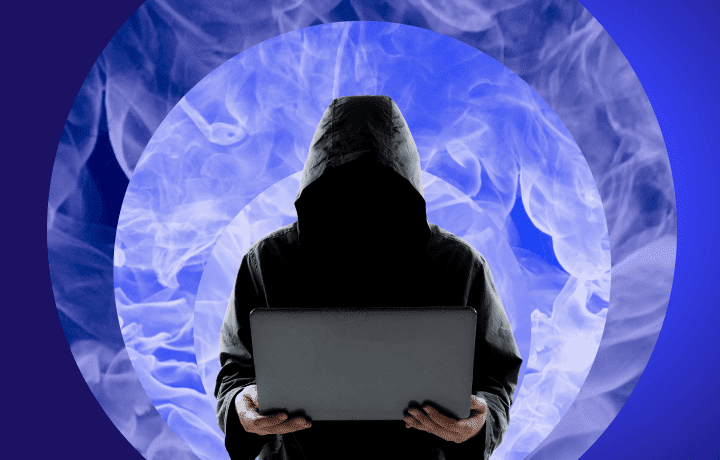
In today's digital age, the demand for secure and efficient identity verification methods has never been greater. As we navigate an increasingly interconnected world, verifying one's identity is crucial for everything from accessing financial services to safeguarding personal information. One innovative solution that has gained significant attention is facial biometric verification. In this blog, we will explore the rising threat of deepfakes and synthetic identities, and why businesses should be utilizing a facial biometric solution to verify genuine identities.
The problem of document-only verification
Traditionally, identity verification has relied on documents such as passports or driver's licenses to confirm a user's identity. However, simply verifying if a document is genuine does have its limitations. Not only can government documents be tampered with or forged, but not associating a genuine person with the verified document via a biometric check makes the document verification much less reliable.
Motion is Onfido’s fully automated biometric verification solution that solves this challenge by harnessing the power of our Atlas AI to perform a facial recognition assessment in seconds to verify if a user looking to gain access is both the owner of the document presented, and physically present — via a simple head turn.
Motion uses highly trained AI models to assess the features and elements presented with a facial biometric verification to verify the genuineness of each user. With Motion it is nearly impossible for impostors to successfully compromise the verification check.
The challenge of deepfakes and synthetic identities
While Motion is a solid biometric verification solution, it faces a formidable adversary in the form of deepfakes and synthetic identities. Deepfakes are AI-generated content that convincingly mimics real individuals, while synthetic identities are fabricated personas that can be used to commit fraud and other crimes. Everyday bad actors and fraud rings are leveraging the power of AI to create fake videos and images, often with minimum effort, that they use to attack businesses. The fact that sophisticated AI technology is out there and readily available to fraudsters raises concerns, appropriately enough, regarding the ability for Motion as well as other biometric solutions to accurately detect and prevent attacks perpetrated by fraudsters using deepfakes and synthetic identities.
A well-trained AI model improves Motion performance
The key for Motion to successfully address the threat of deep fakes and synthetic identities lies in the continuous development of our advanced AI models. Onfido’s in-house experts -- Fraud Lab -- are continuously analyzing production data and measuring our fraud detection performance to assess and dissect the various types of fraud attacks launched against our services. Fraud Lab analyzes facial biometric attacks to better understand the techniques being deployed by fraud rings and bad actors. The research and analysis done by the team feeds directly into the continuous improvement of the AI models supporting Motion. Their ability to generate datasets at scale to train our AI serves as a force multiplier that accelerates the performance of Motion.
You may wonder how their work is a force multiplier? Well, Fraud Lab analyzes and assesses not only the production data it sees every day, but the team also has the facilities to generate deepfakes and synthetic identities based on their research. The team can generate these samples at scale. And to appropriately train AI models you need lots of data… and then add more data. With the ability of the Fraud Lab to generate fake identity specimens at scale based on the attack vectors they see every day exponentially increases the overall amount of data we have available to train our ML models.
The ability to combine production data with our own in-house developed samples allows for the large datasets required to train the Atlas AI that powers Motion. And by utilizing these diverse datasets built leveraging real-world production data along with the manipulated images and videos generated by Fraud Lab, the AI powering Motion is trained to detect and prevent the attack vectors being used today and expected tomorrow.
The future of Motion
As AI technology continues to advance, the future of deepfakes remains uncertain. It is likely that deepfake technology will become more sophisticated, making it increasingly difficult to distinguish genuine content from fabricated ones. And one thing we know for sure is that fraudsters will certainly keep their proverbial finger on the pulse of what will be possible with AI to commit digital identity fraud in the days ahead. Of course the advancement of AI is inevitable and we know fraudsters will continue to leverage it to progressively conduct more sophisticated identity attacks.
Onfido is committed to ensuring that Motion is always improving to protect our customers and their users. From new user onboarding to identity verification, Motion will continue to deliver industry leading performance while delivering users a highly intuitive and easy to navigate experience. No matter the attack vector fraudsters choose to deploy, Motion will be a formidable line of defense to detect and prevent digital identity fraud.
Motion is a 100% automated solution that allows businesses to quickly onboard genuine users to efficiently and cost-effectively grow and expand their business. At the same time, Motion is detecting and preventing the most sophisticated fraud attack vectors – from cheap fakes to deepfakes -- to protect our customers from the costs associated with fraud. Motion’s verified anti-spoofing technology combined with a market-leading UX enables business to welcome genuine customers of all ethnicities with a quick and simple headturn while reducing the time to verify a user from minutes to seconds.
Benefits of Motion:
- Fully automated solution providing results in 15 seconds or less
- Protects against both camera and network injection attacks
- Enables a seamless integration via our Smart Capture SDK
- Ensures a highly secure identity verification with anti-spoofing capabilities
- Compliant with iBETA PAD L1 & L2 requirements
- Promotes inclusivity by design trained on over 10 years of diverse global data sets
- Expands reach and eliminates bias as a WCAG 2.1 accredited solution
Getting started with Motion for advanced facial biometric verification
In our digital-first online world, businesses will continue to be vulnerable to digital identity attacks at the point of onboarding and beyond. As fraudsters level-up their sophistication through the use of AI technology, their attacks will become more and more compelling and increasingly much more challenging for biometric verification solutions to discern a genuine user from a deepfake. And the consequences of falling victim to such attacks can range from reputational damage to financial loss.
Now is the time to take a look at Motion. As synthetic fraud and deepfake technology continues to advance, businesses must stay informed and invest in the tools and practices that will help them detect and prevent these sophisticated attacks. Now is the time for businesses to ensure their biometric verification solution will meet the needs of users, protect brand integrity, maintain the trust of their customers and stakeholders, and enable the business to grow successfully.
Get access to the latest research on fraud and deepfakes, with the latest fraud trends and recommendations, in our Identity Fraud Report.






